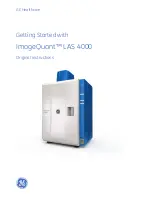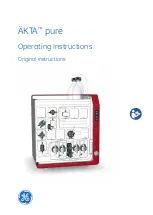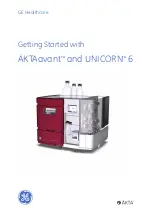
GE H
EALTHCARE
D
IRECTION
5158821-100, R
EVISION
3
E
X
PLORE
L
OCUS
SP S
ERVICE
G
UIDE
Page 19
Chapter 2
Theory & Components
Section 2.1
Basic Concepts
This section describes the basic components of the x-ray assembly, and explains how they work
together to produce a projection. It describes some concepts that will help you to understand the
choices that are available to you when you set up and perform a scan.
2.1.1
Parts of a CT Scanner
The tube
emits x-rays. The current affects the intensity of the x-ray beam, and the voltage affects
the peak of the x-ray energy spectrum of the beam and the distribution of x-rays across energies.
If the x-ray beam were light, the current would affect the brightness of the light, and the voltage
would affect the color.
The filter
controls the energy spectrum of the x-rays. The metal filters in the micro CT scanner are
like the colored filters used in cameras which block certain components of white light. When the x-
ray beam passes through it, the filter preferentially blocks lower-energy x-rays from the beam,
allowing a more uniform beam to pass through.
The shutter
controls the length of time of each exposure. The shutter in the Micro CT assembly
has the same function as the shutter on a camera. In a camera, the shutter interval determines how
long the film is exposed to the light, and a correct shutter interval prevents the film from becoming
over-or under-exposed. In the eXplore Micro CT scanner, the shutter interval determines how long
the detector is exposed to the x-ray beam in each interval of data acquisition.
The specimen
is the object that is being imaged. In a film camera, light bounces off the object,
comes through the aperture, and exposes the film to create an image. In a micro CT scanner, the
x-rays come out of the x-ray tube, go through the object, and act on the scintillator to create a
radiographic projection, which is a map of the beam attenuation properties of different areas of the
object. The projection is recorded by the camera.
The detector
is like the film in a camera. The eXplore Micro CT system’s detector has two
components, a scintillator and a CCD camera, which are connected with fiber optics. The scintillator
is a thin screen of cesium iodide, which luminesces when exposed to x-rays. The camera behind it
records the image that is projected onto the scintillator. The projection is saved in digital format.
Summary of Contents for Healthcare eXplore Locus SP
Page 2: ...This page is intentionally left blank...
Page 12: ...GE HEALTHCARE DIRECTION 5158821 100 REVISION 3 EXPLORE LOCUS SP SERVICE GUIDE Page 12...
Page 13: ...GE HEALTHCARE DIRECTION 5158821 100 REVISION 3 EXPLORE LOCUS SP SERVICE GUIDE Page13...
Page 37: ...GE HEALTHCARE DIRECTION 5158821 100 REVISION 3 EXPLORE LOCUS SP SERVICE GUIDE Page37...
Page 228: ...GE HEALTHCARE DIRECTION 5158821 100 REVISION 3 EXPLORE LOCUS SP SERVICE GUIDE Page 228...
















































